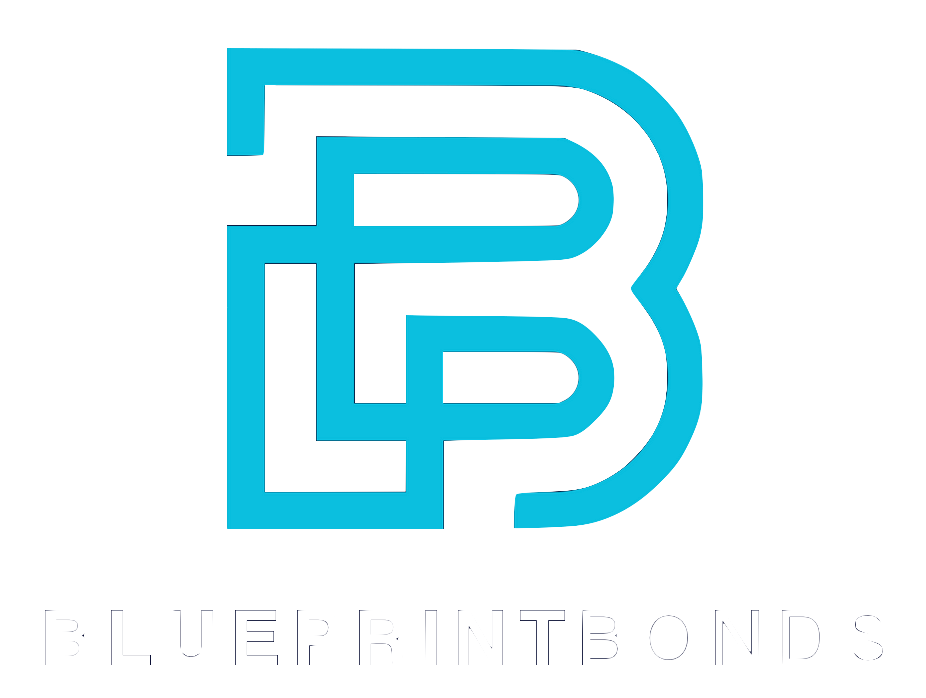In the world of construction and contracting, performance and payment bonds play a crucial role in ensuring that projects run smoothly and that all parties involved are protected. These bonds serve as a safety net for project owners and contractors alike, providing financial assurance that obligations will be met. This article delves deep into the intricacies of performance and payment bonds, exploring their definitions, purposes, processes, and benefits.
Understanding Performance Bonds
A performance bond is a type of surety bond that guarantees the completion of a project according to the terms of the contract. It is typically required by project owners to ensure that contractors fulfill their obligations. If a contractor fails to complete the project or does not meet the specified standards, the surety company that issued the bond will step in to cover the financial losses incurred. This mechanism not only protects the financial interests of the project owner but also helps maintain trust in the construction industry by ensuring that contractors are held accountable for their commitments.
Key Features of Performance Bonds
Performance bonds come with several defining features that make them an essential component of many construction contracts. These features include:
- Guarantee of Completion: The primary purpose of a performance bond is to guarantee that the contractor will complete the project as agreed upon in the contract.
- Financial Backing: The surety company provides the financial backing necessary to complete the project, ensuring that funds are available if the contractor defaults.
- Third-Party Assurance: The bond acts as a contract between three parties: the project owner, the contractor, and the surety company, adding an extra layer of security.
Moreover, performance bonds can also enhance the contractor's credibility. By obtaining a bond, contractors demonstrate their financial stability and reliability, which can be a significant advantage when bidding for projects. This assurance can help them secure more contracts, as project owners are often more inclined to work with contractors who have a proven track record of fulfilling their obligations.
When Are Performance Bonds Required?
Performance bonds are often required in various scenarios, particularly in public sector projects. Here are some common situations where performance bonds are necessary:
- Government Contracts: Many government agencies require performance bonds for construction projects to protect taxpayer money.
- Large Private Projects: Private project owners may also request performance bonds for larger projects to mitigate risks associated with contractor defaults.
- High-Risk Industries: Industries with a history of contractor failures, such as construction, often mandate performance bonds to ensure project completion.
In addition to these scenarios, performance bonds can also be beneficial in industries where projects are particularly complex or involve significant financial investment. For instance, in the energy sector, where projects can span several years and involve multiple stakeholders, performance bonds provide a safety net that encourages investment and innovation. By ensuring that contractors are held accountable for their work, performance bonds help foster a more stable and reliable environment for both project owners and contractors alike.

Exploring Payment Bonds
Payment bonds, on the other hand, are designed to ensure that subcontractors, laborers, and suppliers are paid for their work and materials. While performance bonds focus on the completion of the project, payment bonds focus on the financial obligations of the contractor. This type of bond protects those who contribute to the project from not receiving their due payments.
Importance of Payment Bonds
Payment bonds are vital for maintaining a healthy financial ecosystem in construction projects. They offer several advantages, including:
- Protection for Subcontractors: Payment bonds ensure that subcontractors and suppliers receive payment for their services, reducing the risk of financial loss.
- Encouragement of Fair Practices: By requiring payment bonds, project owners encourage contractors to adhere to fair payment practices.
- Legal Recourse: If a contractor fails to pay, those protected by the payment bond can seek compensation from the surety company.
Who Benefits from Payment Bonds?
Payment bonds benefit various stakeholders in the construction industry:
- Subcontractors: They gain peace of mind knowing they will be compensated for their work.
- Suppliers: Suppliers can trust that they will receive payment for the materials they provide.
- Project Owners: Owners can ensure that the project will be completed without payment disputes, leading to smoother operations.
In addition to these primary beneficiaries, payment bonds also create a ripple effect that enhances the overall integrity of the construction industry. When subcontractors and suppliers are assured of payment, they are more likely to invest in quality materials and skilled labor, which ultimately leads to superior project outcomes. This commitment to quality can elevate a contractor's reputation, making them more competitive in future bids. Furthermore, the presence of payment bonds can attract more subcontractors to a project, as they are reassured that their financial interests are safeguarded, thus fostering a more collaborative and productive work environment.
Moreover, payment bonds contribute to the financial stability of the construction sector as a whole. By minimizing the risk of non-payment, they help maintain cash flow for smaller companies that may not have the financial reserves to absorb losses from unpaid invoices. This stability is crucial, especially in an industry where delays and disputes can lead to significant financial strain. As a result, payment bonds not only protect individual stakeholders but also promote a more resilient and sustainable construction industry, capable of weathering economic fluctuations and maintaining a steady pace of development.
The Relationship Between Performance and Payment Bonds
While performance and payment bonds serve different purposes, they are often intertwined in construction contracts. Together, they create a comprehensive safety net for all parties involved in a project. Understanding the relationship between these two types of bonds is essential for contractors and project owners alike.
Complementary Roles
Performance and payment bonds complement each other in several ways:
- Holistic Protection: Together, they protect both the project owner and those who contribute to the project, ensuring that obligations are met on both ends.
- Enhanced Trust: The presence of both bonds fosters trust among all parties, as it demonstrates a commitment to fulfilling contractual obligations.
- Streamlined Processes: With both bonds in place, the likelihood of disputes arising decreases, allowing for a more efficient project timeline.
Common Misconceptions
Despite their importance, there are several misconceptions surrounding performance and payment bonds:
- They Are the Same: Many people mistakenly believe that performance and payment bonds are interchangeable; however, they serve distinct purposes.
- Only for Large Projects: While often associated with large projects, smaller projects can also benefit from these bonds.
- Only Required by Government Contracts: Although government contracts frequently require them, private contracts can also stipulate the need for performance and payment bonds.
Legal Framework
The legal framework surrounding performance and payment bonds is crucial to their effectiveness. These bonds are governed by state laws, which can vary significantly. In some jurisdictions, the law mandates that certain types of projects, particularly those involving public funds, must have these bonds in place to protect the interests of taxpayers and ensure that projects are completed satisfactorily. This legal requirement not only reinforces the importance of these bonds but also establishes a clear recourse for parties who may be adversely affected by a contractor's failure to perform or pay.
Impact on Project Financing
Furthermore, the presence of performance and payment bonds can significantly impact project financing. Lenders often view these bonds as a form of risk mitigation, which can lead to more favorable financing terms for contractors. When a contractor has both bonds in place, it signals to lenders that the project is well-managed and that the contractor is committed to meeting their obligations. This can result in lower interest rates or more accessible credit lines, ultimately allowing for a smoother financial flow throughout the project lifecycle. Additionally, having these bonds can enhance a contractor's reputation in the industry, making them more attractive to potential clients and partners.
The Process of Obtaining Performance and Payment Bonds
Obtaining performance and payment bonds involves several steps, which can vary depending on the surety company and the specifics of the project. Understanding this process can help contractors and project owners navigate the requirements more effectively.
Step 1: Assessing Bonding Needs
The first step in obtaining bonds is assessing the specific needs of the project. This includes determining whether performance and payment bonds are required and understanding the bond amounts necessary to cover potential risks. Project owners should communicate their bond requirements clearly to contractors to avoid misunderstandings.
Step 2: Selecting a Surety Company
Choosing the right surety company is crucial. Contractors should research various surety providers, considering factors such as:
- Reputation: Look for companies with a strong track record in the industry.
- Financial Stability: Ensure that the surety company has the financial resources to cover potential claims.
- Customer Service: A responsive and supportive surety company can make the bonding process smoother.
Step 3: Submitting the Application
Once a surety company has been selected, contractors must submit an application for the bonds. This application typically includes:
- Company Financials: Contractors will need to provide financial statements to demonstrate their stability.
- Project Details: Information about the project, including scope, timeline, and budget, will be required.
- Experience and References: Contractors should include their experience in similar projects and references from previous clients.

Costs Associated with Performance and Payment Bonds
The cost of obtaining performance and payment bonds can vary widely based on several factors, including the project size, the contractor's creditworthiness, and the bond amount required. Understanding these costs is essential for contractors and project owners alike.
Factors Influencing Bond Costs
Several factors can influence the cost of performance and payment bonds:
- Bond Amount: The larger the bond amount, the higher the premium will typically be.
- Contractor's Credit History: Contractors with strong credit histories may qualify for lower premiums, while those with poor credit may face higher costs.
- Project Type: Certain types of projects may be deemed higher risk, impacting the bond cost.
Typical Premium Ranges
On average, contractors can expect to pay between 0.5% to 3% of the bond amount as a premium. For example, if a contractor is required to obtain a $1 million performance bond, the premium could range from $5,000 to $30,000. It's essential for contractors to budget for these costs when bidding on projects that require bonds.
Claiming on Performance and Payment Bonds
In the unfortunate event that a contractor defaults on their obligations, claims can be made on performance and payment bonds. Understanding the claims process is crucial for all parties involved.
Filing a Claim
To file a claim on a performance or payment bond, the following steps are typically involved:
- Notification: The party making the claim must notify the surety company of the contractor's default or failure to pay.
- Documentation: Supporting documentation must be provided to substantiate the claim, including contracts, invoices, and proof of non-payment.
- Investigation: The surety company will investigate the claim to determine its validity before proceeding with any payout.
Potential Outcomes of a Claim
Once a claim has been filed and investigated, the surety company may take one of several actions:
- Payout: If the claim is deemed valid, the surety company will issue a payout to cover the financial losses incurred.
- Contractor Intervention: The surety company may work with the contractor to resolve the issue and complete the project.
- Denial of Claim:
If the claim is found to be invalid, the surety company will deny the claim, and the claimant may need to seek other legal remedies.
Legal Considerations Surrounding Performance and Payment Bonds
Understanding the legal aspects of performance and payment bonds is essential for contractors and project owners. Various laws and regulations govern these bonds, influencing their enforceability and requirements.
State-Specific Regulations
Many states have specific laws regarding performance and payment bonds, particularly for public projects. Contractors should familiarize themselves with the regulations in their state to ensure compliance. This may include:
- Bond Amount Requirements: Some states have minimum bond amount requirements based on the project size.
- Filing Deadlines: There may be deadlines for filing claims or obtaining bonds that contractors must adhere to.
- Licensing Requirements: Certain states may require contractors to be licensed to obtain performance and payment bonds.
Legal Rights and Obligations
Both project owners and contractors have legal rights and obligations when it comes to performance and payment bonds:
- Contractual Obligations: Contractors must fulfill their contractual obligations to avoid triggering claims on the bonds.
- Right to Claim: Subcontractors and suppliers have the right to file claims on payment bonds if they are not compensated for their work.
- Surety Company Responsibilities:
Surety companies have a legal obligation to investigate claims and provide payouts when warranted.
Best Practices for Contractors and Project Owners
To navigate the complexities of performance and payment bonds effectively, both contractors and project owners should adhere to best practices. These practices can help mitigate risks and ensure smoother project execution.
For Contractors
- Maintain Strong Financials: A solid financial standing can lead to lower bond premiums and increased trust from project owners.
- Communicate Clearly: Open communication with project owners about bond requirements can prevent misunderstandings.
- Document Everything: Keeping thorough records of contracts, communications, and payments can protect against potential claims.
For Project Owners
- Clearly Define Requirements: Clearly outline bond requirements in contracts to avoid confusion later on.
- Research Contractors: Vet contractors thoroughly to ensure they have a strong track record and financial stability.
- Monitor Project Progress:
Regularly check in on project progress to identify potential issues before they escalate.
Conclusion
Performance and payment bonds are essential tools in the construction industry that provide security and assurance for all parties involved. Understanding the nuances of these bonds, their processes, and their legal implications can help contractors and project owners navigate the complexities of construction projects more effectively. By adhering to best practices and staying informed about regulations, stakeholders can foster a more secure and efficient construction environment.
Whether you are a contractor looking to secure a project or a project owner seeking to protect your investment, knowledge of performance and payment bonds is invaluable. As the construction industry continues to evolve, these bonds will remain a cornerstone of project assurance and financial security.
Article By: Ryan Spalding
Licensed Insurance Agent & Bond Specialist
Contact Us

